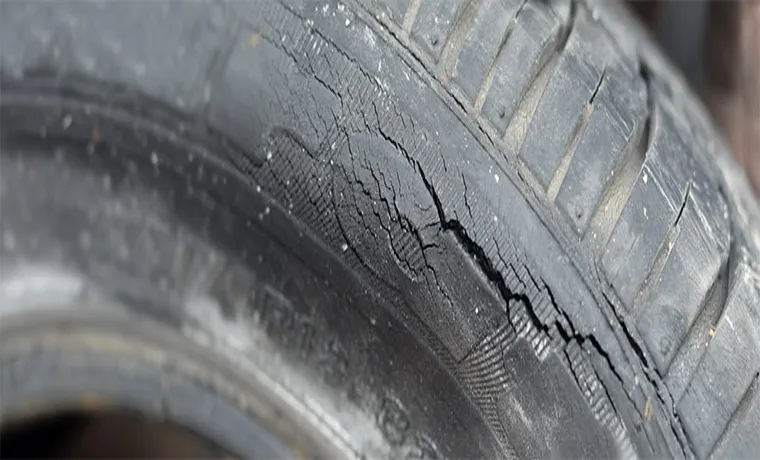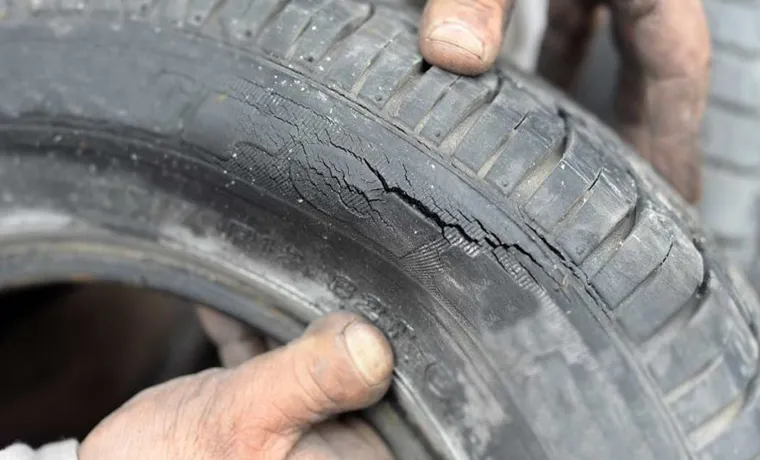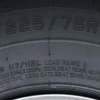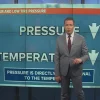Have you ever noticed tiny cracks on your tires? Maybe you’ve seen those small, shallow lines on the side that look kind of like wrinkles. You might think they’re just cosmetic, but those cracks are actually a sign of a serious issue known as tire dry rot. Tire dry rot, as the name suggests, is a process in which the rubber on your tires dries out and starts to crack and break down.
Not only does this make your tires look less than appealing, but it can also have dangerous consequences. In this blog, we’ll take a closer look at what causes tire dry rot, how to spot it, and what you can do to prevent it.
Table of Contents
What is Tire Dry Rot?
Tire dry rot is a common issue that happens when the rubber of a tire dries out and becomes brittle. It occurs due to exposure to extreme weather conditions, especially sunlight and heat. As tires age and are exposed to these elements, the rubber slowly begins to deteriorate.
This leads to cracks and splits in the surface of the tire, reducing the tire’s strength and durability. If left unaddressed, tire dry rot can lead to tire failure and potentially dangerous situations. It’s important to regularly inspect tires for signs of dry rot by looking at the tread and sidewalls for cracks, bulges, or other abnormalities.
It’s also important to store tires properly by keeping them away from direct sunlight and sources of heat and to replace tires in a timely manner to ensure safe driving conditions.
The Definition of Tire Dry Rot
Tire dry rot is a phenomenon that occurs when tires are exposed to environmental factors such as sunlight and heat for extended periods. As a result, the tire rubber dries out and becomes cracked, brittle, and weak. This not only compromises the structural integrity of the tire but also reduces its ability to grip the road, affecting the overall driving performance.
Tire dry rot can be caused by several factors, including prolonged storage, underinflation, and infrequent use. It is essential to regularly inspect your tires for signs of dry rot, such as visible cracks and discoloration. If you notice any signs of tire dry rot, it’s crucial to replace the tires to avoid the risk of a blowout while driving.
Preventative measures such as storing your tires in a cool, dry place and regularly inflating them to the manufacturer’s recommended pressure can help extend their lifespan and prevent tire dry rot.

How to Identify Tire Dry Rot
Tire dry rot is a common term used to describe the cracking or deterioration of rubber tires due to exposure to the sun and other environmental factors. It is a natural process that occurs over time, and it can cause your tires to become weak and prone to failure. Dry rot can be identified by cracks in the sidewalls and tread, as well as a hard and brittle texture.
If you notice these signs of dry rot in your tires, it is crucial to have them replaced promptly to avoid potential safety hazards while driving. Remember, prevention is always better than cure, so make sure to take good care of your tires by storing them in a cool, dry place and avoiding prolonged exposure to the sun and other harsh elements. By doing so, you can extend the lifespan of your tires and keep your vehicle safe on the road.
Causes of Tire Dry Rot
What is tire dry rot and what causes it? Tire dry rot happens when the rubber compounds in tires break down and crack due to external factors such as excessive heat, UV exposure, and long periods of non-use. This process is accelerated by poor storage, under-inflation, and exposure to chemicals. It is important to regularly inspect your tires for signs of dry rot as it can lead to premature tire failure and even dangerous blowouts while driving.
Signs to look out for include cracks in the sidewall or between the tread, a change in color or texture of the tire, or a rough or uneven surface. To prevent tire dry rot, store your tires in a cool, dry place, keep them properly inflated, and use a protective tire dressing to shield them from UV rays and chemical damage. Regularly rotating and replacing your tires can also help extend their lifespan and prevent dry rot.
Age and Sun Exposure
Age and Sun Exposure Tire dry rot is a common issue faced by vehicle owners, especially those living in areas with hot and dry weather conditions. Dry rot is a phenomenon that occurs when the external rubber coating of the tire starts to crack and degrade due to prolonged exposure to sun and other environmental factors. Apart from exposure to the sun, the age of the tire also plays a crucial role in causing dry rot.
As the tire ages, its rubber deteriorates, making it more vulnerable to damage from sun exposure and other environmental factors. The cracks formed due to dry rot can lead to punctures and blowouts, posing a risk to the safety of the driver and other passengers. Therefore, it is essential to ensure proper tire maintenance, including regular inspections, rotations, and replacements, to avoid the risks of tire dry rot.
Remember, neglecting the maintenance of your tires can lead to costly repairs and affect the performance and safety of your car.
Low Tire Pressure
Low tire pressure can often be a cause of tire dry rot. When tire pressure is too low, it can lead to excessive heat buildup, causing the rubber to break down and deteriorate faster. Additionally, if the tires are not properly inflated, they may develop flat spots, which can cause uneven wear and tear.
To combat this issue, it’s important to regularly check tire pressure levels and adhere to the manufacturer’s recommended pressure rating. Over-inflating can also be problematic, so it’s important to find the sweet spot for optimal tire performance and longevity. Remember, if your tire pressure is too low, it can lead to expensive tire replacements and potentially dangerous driving conditions.
So, don’t neglect this important aspect of tire maintenance and keep your tires properly inflated.
Ozone and Pollution Exposure
When it comes to tire maintenance, preventing dry rot is crucial for your vehicle’s safety. Dry rot refers to cracks and damage that occur due to the aging of the tire’s rubber. Exposure to pollution and ozone is one common cause of tire dry rot.
Ozone, which is a reactive gas, can break down the chemicals in tire rubber that holds the tire together. It causes the rubber to weaken and crack over time. Airborne pollutants from vehicles and factories can also contribute to tire rot.
These contaminants penetrate the surface of the tires, causing them to lose their durability and elasticity. It’s important to store your tires in a dry, cool environment, and to avoid exposure to sunlight whenever possible. Regular tire maintenance, including checking tire pressure and alignment, can also help prevent dry rot, and keep you safe on the road.
Remember, taking the time to care for your tires can ultimately save you money by extending their lifespan and preventing accidents on the road.
How to Prevent Tire Dry Rot
Tire dry rot is a common issue that can affect your vehicle’s safety and performance, causing cracks, splits, and other damages to your tires. If left untreated, dry rot can lead to blowouts and other potentially dangerous situations on the road. Fortunately, there are several ways to prevent tire dry rot and ensure your tires stay in good condition for longer.
One crucial step is to keep your tires properly inflated and aligned, as underinflated or misaligned tires can cause excessive wear and tear. You should also avoid exposing your tires to harsh weather conditions, such as extreme heat or cold, as these can cause the rubber to deteriorate more quickly. Additionally, storing your tires properly and getting them regularly inspected by a qualified technician can help identify any potential issues early on, preventing further damage and prolonging their lifespan.
By following these simple precautions and taking good care of your tires, you can help prevent dry rot and ensure your safety on the road.
Regularly Check and Inflate Tires
Regularly checking and inflating your tires is essential to preventing tire dry rot. This is because when tires are underinflated, they can build up heat, which can cause the rubber to deteriorate faster and lead to dry rot. To ensure you avoid these issues, make it a habit to check your tire pressure regularly, at least once a month, and inflate them to the manufacturer’s recommended levels.
This will not only prevent dry rot but also improve your car’s fuel efficiency and overall performance. Remember, neglecting your tires can lead to serious safety hazards, so invest a few minutes of your time to ensure they are in excellent condition.
Store Tires Properly
Tire dry rot is a common issue when storing tires for extended periods. However, there are some simple steps you can take to prevent this from occurring. First and foremost, it’s crucial to store your tires in a cool, dry place that is protected from direct sunlight and other weather elements.
Inspect your tires periodically to ensure that they are not showing signs of dry rot. This includes cracks, cuts, or bulges on the sidewalls or tread. Another tip is to avoid using tire dressings, as they can cause tire materials to break down and become brittle over time.
Instead, use a mild soap and water to clean your tires, and allow them to dry completely before storing. Finally, make sure that your tires are not stacked or placed in contact with any sharp objects, as they can cause damage to the tires and lead to dry rot. By following these simple tips, you can prevent tire dry rot and ensure that your tires last as long as possible.
Conclusion
In conclusion, tire dry rot is essentially the equivalent of your grandmother’s favorite armchair – they both show signs of wear and tear from time, neglect, and environmental factors. Just as your grandmother’s armchair may develop cracks and tears from exposure to sunlight or lack of use, tires can also become brittle and deteriorate over time due to UV rays, heat, and oxygen. So, if you want to ensure a safe and smooth ride, it’s important to give your tires some TLC and keep them protected from the elements.
After all, your tires take you places, and you wouldn’t want to end up stuck on the side of the road because of some pesky dry rot. Take care of your tires, and they’ll take care of you!”
FAQs
What causes tire dry rot?
Tire dry rot is caused by oxidation and exposure to the elements such as UV light, heat, and weather.
How can tire dry rot be prevented?
Tire dry rot can be prevented by storing tires in a cool, dry place away from sunlight and weather exposure, and using tire covers to protect from UV light.
Is tire dry rot dangerous?
Yes, tire dry rot can lead to tire failure, which can be dangerous while driving.
How can I check for tire dry rot?
To check for tire dry rot, inspect the tire sidewalls for cracks, splitting, or a faded appearance.
Can tire dry rot be repaired?
No, tire dry rot cannot be repaired. Tires with dry rot should be replaced as soon as possible.
What is the average lifespan of a tire?
The average lifespan of a tire is 6 years, with proper maintenance and regular use.
How often should I check my tires for dry rot?
It is recommended to check your tires for dry rot at least once a year, and more frequently if the tires are exposed to harsh weather conditions.



